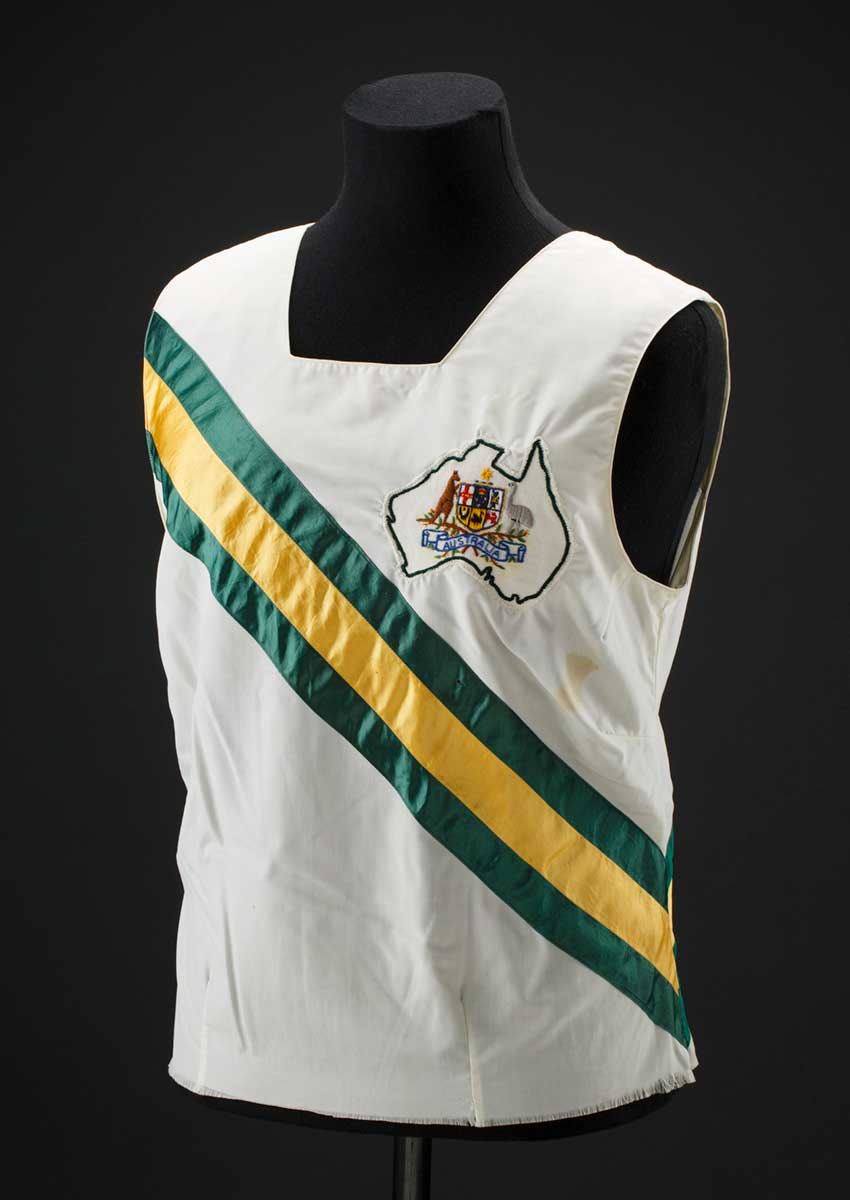Australians have competed at every Olympic Games in the modern era and hosted the games in Melbourne in 1956 and Sydney in 2000.
Explore Australia's sporting history through the Museum's Olympic collection and the stories of the athletes who wear the green and gold, carrying an image of our nation onto the international stage every four years.
Discover Australia's Olympic history
Australian Olympic history
The Museum's collection tells the stories of great Australian athletes – beyond the medal wins – to encompass broader social and political changes both in Australia and overseas.

This includes Peter Norman, who stood alongside Tommie Smith and John Carlos at the 1968 Mexico City Games when they raised their fists in protest against racial discrimination in the USA.
Peter Norman
Peter Norman, a Melbourne school teacher, won the silver medal in the 200m race at the 1968 Olympic Games in Mexico City. His time of 20.06 seconds is an Australian record that stands today.
Many thought Norman was unaware of the protest and perhaps even excluded from it, but he was a knowing and willing participant.
When gold medallist Smith and silver medallist Carlos told him of their planned protest, he said, ‘I’ll stand with you.’ In an interview after the ceremony Norman explained, ‘I believe that every man is born equal and should be treated that way.’

Shirley Strickland
Shirley Strickland represented Australia at London in 1948, Helsinki in 1952 and Melbourne in 1956. She won medals at each, including gold in the 80m hurdles in 1952 and 1956, and the 4x100m relay in 1956.
Strickland remains Australia’s only track and field athlete to have won back-to-back gold medals.
After Helsinki, Strickland took a break from competition to start a family. When she returned to training for Melbourne, she was a 31-year-old mother of 2 and was widely criticised by those who thought that her age and motherhood should have marked the end of her athletic career.

Sue Powell
In 2007 Sue Powell suffered a herniation of a vertebral disc and took up cycling to help with her recovery. She became a world champion.
Powell wore a brace to stabilise her lower leg and transfer power from her upper leg to the pedal.
Sue, a multiple world champion medallist, won gold in the 3-kilometre individual pursuit (C4 classification) and silver in the road race at the 2012 Paralympics.
Sue donated her 2009 UCI (Union Cycliste Internationale) World Championship medal, a carbon fibre leg brace, and the Australian team skinsuit she wore at the 2012 Paralympics, to the National Museum of Australia.
Learn more about Australia's Olympic host cities
A spectacular opening ceremony, commentary from Roy and HG and brightly-dressed volunteers. Read curator Laina Hall's reflections on 20 years since the Sydney Olympics.
Learn about the advent of television in Australia, where broadcasts started just in time for the 1956 Melbourne Olympics – the first games to be held outside Europe or the United States.
See highlights from the Museum's Sydney Olympics collection, which were on show in 2020. Watch the full Live at the Museum video on YouTube with Sydney 2000 Olympians swimmer Petria Thomas and handballer Taip Ramadani, and curator Laina Hall.
Defining Moments in Australian History 18 Aug 2016
Defining Moments in sports panel discussion
You may also like